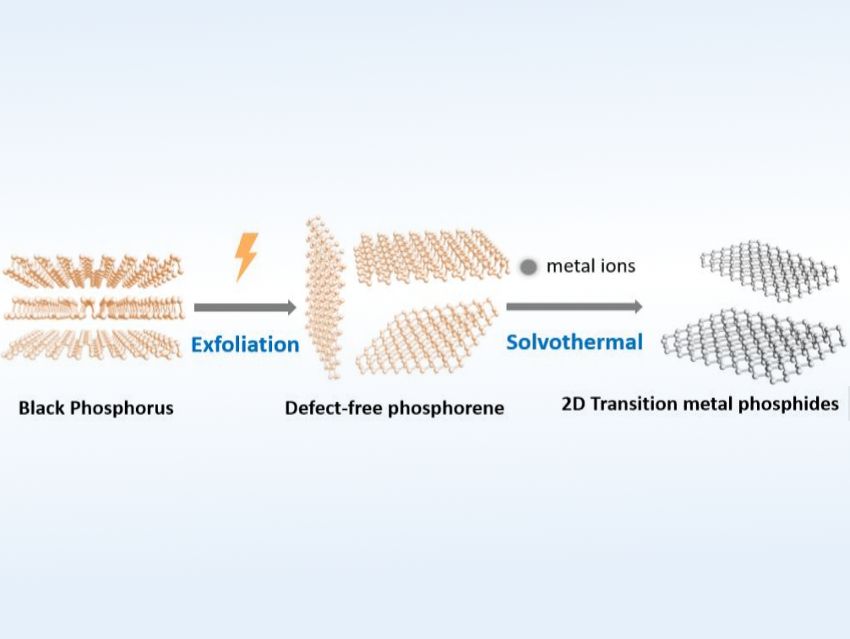Many transition-metal phosphides (TMPs) are narrow-gap semiconductors and can be used as electrocatalysts. Two-dimensional (2D) TMPs are especially attractive due to highly exposed active sites that promote efficient reactions. However, the synthesis of 2D TMPs is challenging because TMPs are intrinsically non-layered materials. They cannot be delaminated into separate, thin layers like, e.g., graphite can be converted to graphene.
Xinliang Feng, Technical University of Dresden, Germany, and colleagues have developed a bottom-up approach to 2D TMPs. The team used 2D phosphorene sheets as a phosphorus source and as templates for the synthesis. First, defect-free phosphorene sheets were prepared via the electrochemical exfoliation of black phosphorus. The resulting sheets were mixed with metal salts and underwent solvothermal reactions. Metal sources such as ammonium molybdate, vanadyl acetylacetonate, ferrocene, iron(III) acetylacetonate, cobalt(II) acetylacetonate, or nickel(II) acetylacetonate were used.
This approach gave a series of 2D TMPs under mild conditions. Some of these materials have useful properties: 2D cobalt phosphide (Co2P), for example, acts as a p-type semiconductor and can be used in field-effect transistors. Doping this material with iron resulted in Co1.5Fe0.5P, which has an outstanding electrocatalytic performance for the oxygen evolution reaction (OER). According to the researchers, the work also provides useful insights for the development of other non-layered 2D materials.
- Topochemical Synthesis of Two-Dimensional Transition Metal Phosphides Using Phosphorene Templates,
Sheng Yang, Guangbo Chen, Antonio Gaetano Ricciardulli, Panpan Zhang, Zhen Zhang, Huanhuan Shi, Ji Ma, Jian Zhang, Paul Blom, Xinliang Feng,
Angew. Chem. Int. Ed. 2019.
https://doi.org/10.1002/anie.201911428




